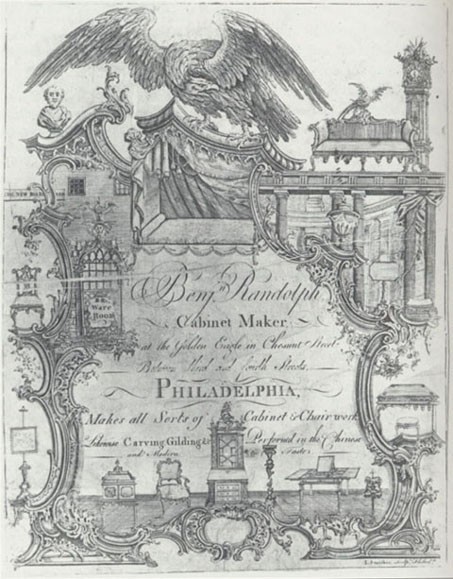
James Smither, Benjamin Randolph trade card, Philadelphia, 1769. Line engraving on paper. 9" x 7". (Courtesy, The Library Company of Philadelphia.)
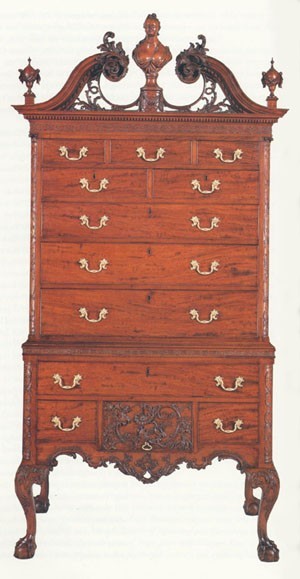
High chest, Philadelphia, 1762–1775. Mahogany with tulip poplar, white cedar, and yellow pine. H. 91 3/4", W. 44 5/8", D. 24 5/8". (The Metropolitan Museum of Art, Kennedy Fund. (1918, acc. 18.110.4) Photograph, all rights reserved, The Metropolitan Museum of Art.)

Design for a desk-and-bookcase illustrated on pl. 108 in the third edition of Thomas Chippendale’s Gentleman and Cabinet-Maker’s Director (London, 1762). (The Metropolitan Museum of Art, The Elisha Whittelsey Colllection, The Elisha Whittelsey Fund, 1982. (acc. 1982.1133, pl. 108) Photograph, all rights reserved, The Metropolitan Museum of Art.)
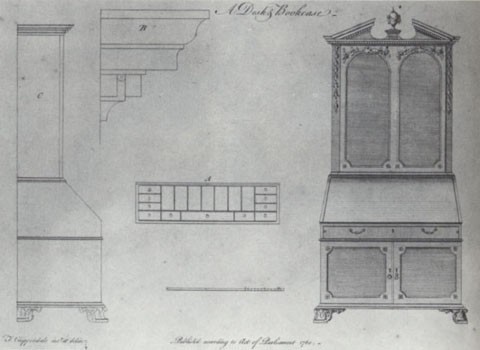
Design for a desk-and-bookcase illustrated on pl. 107 in the third edition of Thomas Chippendale’s Gentleman and Cabinet-Maker's Director (London 1762). (The Metropolitan Museum of Art, The Elisha Whittelsey Collection, The Elisha Whittelsey Fund, 1982. (acc. 1982.1133, pl. 107) Photograph, all rights reserved, The Metropolitan Museum of Art.)

Detail of the cornice of the high chest illustrated in fig. 2. In both size and profile, the cornice exactly matches the full-scale cornice detail illustrated in fig. 4. (Photograph, all rights reserved, The Metropolitan Museum of Art.)
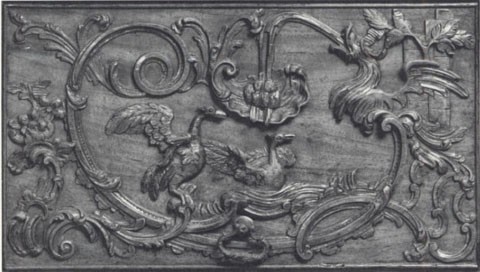
Detail of the bottom drawer appliqué of the high chest illustrated in fig. 2. (Photograph, all rights reserved, The Metropolitan Museum of Art.)
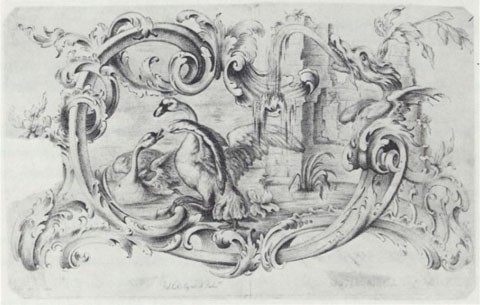
Design for a chimneypiece tablet on pl. 5 in Thomas Johnson’s New Book of Ornaments (London, 1762). (The Metropolitan Museum of Art, Gift of Harvey Smith, 1985. (acc. 1985.1099 pl. 5) Photograph, all rights reserved, The Metropolitan Museum of Art.)

Desk-and-bookcase, Philadelphia, ca. 1765. Mahogany with yellow pine, white cedar, tulip poplar, and white oak. (Collection of George and Linda Kaufman; photo, Dirk Bakker.)
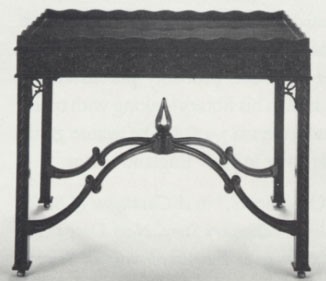
China table attributed to Robert Harrold, Portsmouth, 1765–1775. Mahogany and mahogany veneer with maple and white pine. H. 28 5/8", W. 36 1/4", D. 22 7/8". (Courtesy, Carnegie Museum of Art, museum purchase: Richard King Mellon Foundation grant, acc. 72.55.2.)
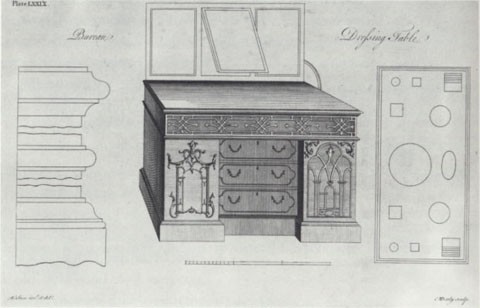
Design for bureau dressing table illustrated on pl. 40 of William Ince and John Mayhew’s Universal System of Houshold Furniture (1762). (The Metropolitan Museum of Art, Harris Brisbane Dick Fund, 1934. (acc. 34.100 pl 40) Photograph, all rights reserved, The Metropolitan Museum of Art.)
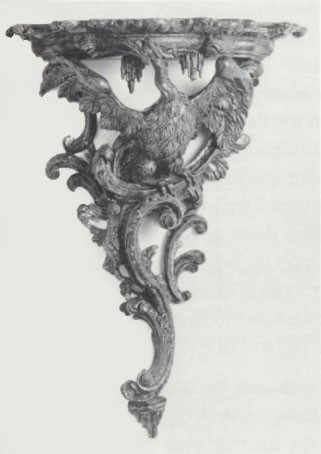
Wall bracket, Philadelphia, 1765–1775. White pine. H. 16 1/4", W. 12 7/8", D. 5 1/2". (Courtesy, Winterthur Museum, acc. 58.2242.)
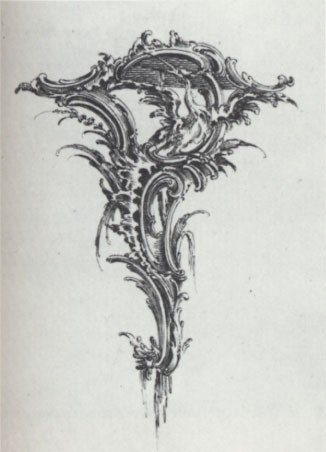
Design for a wall bracket illustrated on pl. 42 of Thomas Johnson’s One Hundred and Fifty New Designs (1761) engraving on paper. (The Metropolitan Museum of Art, Harris Brisbane Dick Fund, 1932. (acc. 32.61 pl 42) Photograph, all rights reserved, The Metropolitan Museum of Art.)
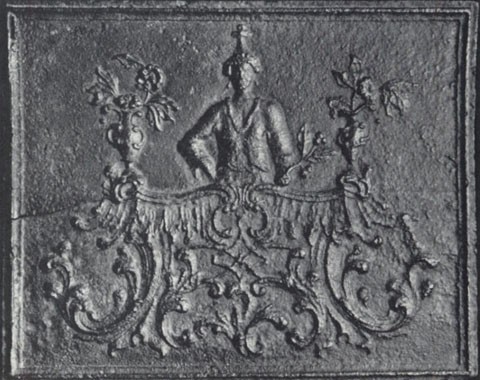
Side plate from a six-plate stove attributed to Marlboro Furnace, Frederick County, Virginia, 1768–1780. H. 21 7/8", W. 27 1/2". (Colonial Williamsburg Foundation, partial gift of Liza and Wallace Gusler, acc. 1992–123.)
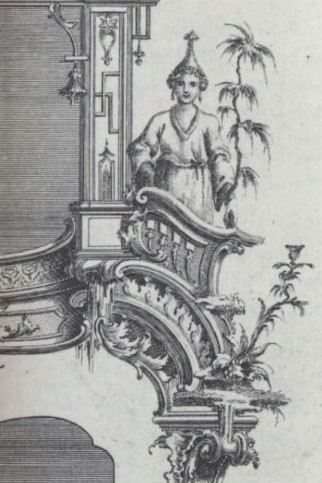
Design for a chimneypiece illustrated on pl. 7 of Matthias Lock and Henry Copland’s New Book of Ornaments (1752-1768). (The Metropolitan Museum of Art, Harris Brisbane Dick Fund, 1928 (acc. 28.88.7) Photograph, all rights reserved, The Metropolitan Museum of Art.)
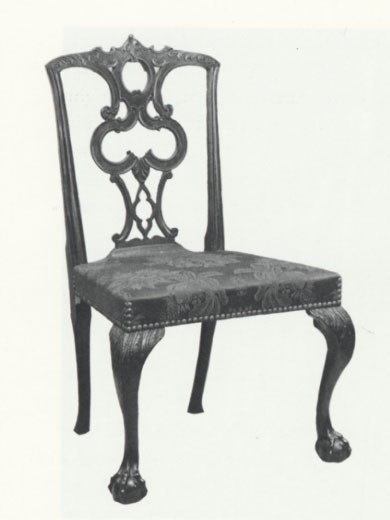
Side chair, Boston, 1765–1785. Mahogany with maple. H 38 3/4", W. 23 5/8", D. 21". (The Metropolitan Museum of Art, Gift of Mrs. Paul Moore, 1939. (acc. 39.88.1) Photograph, all rights reserved, The Metropolitan Museum of Art.)
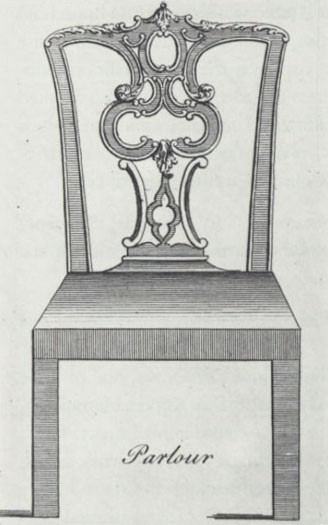
Design for a “Parlour” chair illustrated on pl. 9 of Robert Manwaring’s Cabinet and Chair-Maker’s Real Friend and Companion (1765). (The Metropolitan Museum of Art, Harris Brisbane Dick Fund (acc. 32.9.6.) Photograph, all rights reserved,The Metropolitan Museum of Art.)
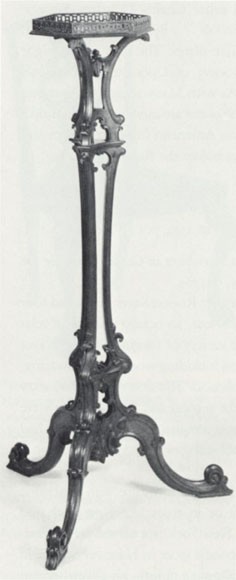
Candlestand attributed to the Anthony Hay shop, Williamsburg, Virginia, 1774–1776. Mahogany. H. 48", W. (top) 10". (Courtesy, Mount Vernon Ladies Association.)
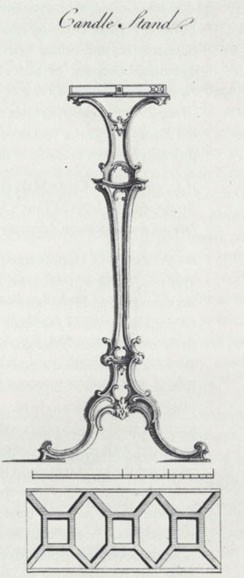
Design for a candlestand illustrated on pl. 1 of the Society of Upholsterers’ Household Furniture in Genteel Taste (1760). (The Metropolitan Museum of Art, Harris Brisbane Dick Fund, 1929. (acc. 29.43, pl.1) Photograph, all rights reserved, The Metropolitan Museum of Art.)

Side chair, Salem, Massachusetts, 1790–1800, attributed to Samuel McIntire. Mahogany, ebony, ash, birch, white pine, H. 37 7/8", W. 27 7/8", D. 18". (The Metropolitan Museum of Art, The Friends of the American Wing Fund, 1962 (acc. 62.16) Photograph, all rights reserved, The Metropolitan Museum of Art.)
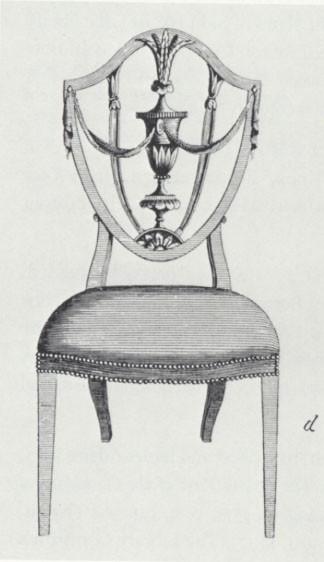
Design for a side chair illustrated on pl. 2 of George Hepplewhite’s Cabinet-Maker and Upholsterer’s Guide (1788). (The Metropolitan Museum of Art, Rogers Fund, 1952, acc. 52.519.187) All rights reserved, The Metropolitan Museum of Art.

Arm chair, Salem, Massachusetts, 1790–1800, attributed to Samuel McIntire. Mahogany with birch and white pine. H. 32 1/2", W. 21", D. 18". (The Metropolitan Museum of Art, Rogers Fund, 1945 (acc.45.105) Photograph, all rights reserved, The Metropolitan Museum of Art.)
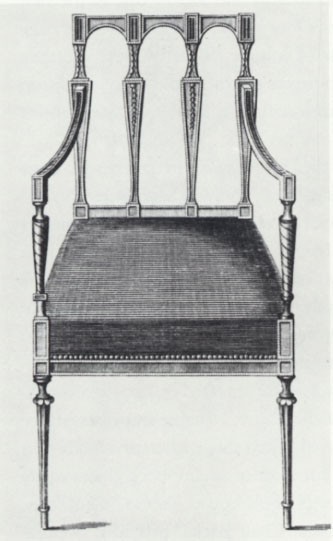
Design for a side chair illustrated in pl. 33 of Thomas Sheraton’s Cabinet-Maker & Upholsterer’s Drawing Book (1793). (The Metropolitan Museum of Art, Rogers Fund, 1952, acc.52.519.25.. pl.33.) All rights reserved, The Metropolitan Museum of Art.

James Akin, Joseph B. Barry trade card, Philadelphia, ca. 1810. Line engraving on paper. From an advertisement by the Old Print Shop, in Antiques 34, no. 1 (July, 1938): 36.
